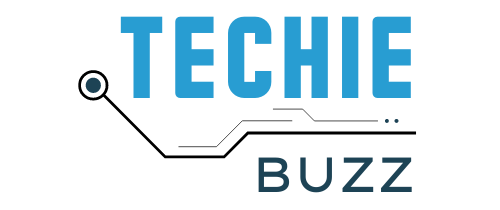Employee engagement is not a buzzword; it’s the lifeblood of any thriving organization. It’s about more than just getting your employees to show up to work every day. It’s about inspiring them to give their best, day in and day out because they genuinely want to. When employees are engaged, they become your organization’s greatest asset.
At its core, employee engagement is the emotional connection employees have with their work, colleagues, and the organization. Engaged hirelings feel passionate, committed, and motivated to contribute their skills and talents to the company’s success. They don’t just perform for a paycheck; they operate to make a difference.
Define the Concept of a Revitalized Workforce
A revitalized workforce is a workforce that’s not merely surviving but thriving. It’s composed of individuals who are not content with mediocrity but strive for excellence. These staffers wake up excited to tackle their daily challenges, collaborate with their peers, and innovate in their roles. A revitalized crew breathes life into an organization, infusing it with energy, creativity, and a relentless pursuit of success.
Highlight the Benefits of an Engaged Workforce

The advantages of an engaged workforce are multifold. Engaged employees are significantly more productive, which directly impacts the bottom line. They tend to stay with the organization longer, reducing turnover and the associated costs. Moreover, they become passionate advocates for your company, attracting top talent and boosting your brand’s reputation.
Engaged hirelings are also more likely to contribute fresh ideas and innovative solutions, driving the organization’s growth and adaptability. Their enthusiasm and commitment create a positive ripple effect throughout the office, fostering a culture of collaboration, positivity, and resilience.
Identify Common Signs of Disengagement in Employees
Understanding the signs of employee disengagement is essential for early intervention. Some common indicators include decreased productivity, increased absenteeism, and a noticeable lack of enthusiasm. Disengaged workers may express frequent complaints about their jobs or exhibit a general sense of disinterest.
The key is to be attentive and proactive. Regularly survey workers to gauge their satisfaction and engagement levels. Pay attention to subtle cues like body language, tone of voice, and interactions with colleagues. Identifying disengagement early can prevent it from becoming a chronic issue that erodes office morale and productivity.
Offer Strategies for Effective Communication

Effective communication is the bedrock of any engaged force. Employees need to feel informed, heard, and valued. One of the most crucial strategies is to maintain transparency in all matters, from company goals and financial performance to changes in organizational structure.
Create channels for open dialogue and feedback. Regular one-on-one meetings between managers and hirelings provide an opportunity for discussion and problem-solving. Additionally, use anonymous suggestion boxes or digital platforms for staffers to voice their concerns or ideas without fear of retribution.
Provide Tips for Fostering a Positive Work Culture
A positive culture is the breeding ground for engaged employees. Cultivate an environment where teamwork, respect, and inclusion are not just slogans but lived values. Encourage hirelings to share their opinions and be active participants in shaping the culture.
Celebrate achievements, both big and small. Recognize and appreciate employees for their contributions. When workers feel valued and supported, they are more likely to engage with their work and collaborate effectively with their colleagues.
Discuss the Role of Leadership in Employee Engagement

Leaders play a pivotal role in shaping the culture of employee engagement within an organization. They set the tone, and their actions and attitudes directly impact the employees they lead. Leading by example is paramount.
Effective leaders demonstrate transparency by sharing company goals and strategies. They provide opportunities for skill development and growth, aligning individual goals with organizational objectives. Furthermore, they foster an environment of trust, empathy, and open communication.
Explore Opportunities for Skill Development and Growth
One of the most potent drivers of employee engagement is a clear path for growth and development. Employees want to know that their contributions are valued and that there are opportunities for advancement within the organization.
Invest in training and development programs that help employees acquire new skills and stay relevant in their roles. Create a culture of continuous learning by offering resources and support for personal and professional development. When workers see that the organization is invested in their growth, they are more likely to remain engaged and committed.
Share Methods for Recognizing and Rewarding Employees

Recognition and rewards are powerful tools for boosting hiring engagement. Implement an employee recognition program that acknowledges outstanding contributions. Recognize both individual and team achievements to foster a sense of camaraderie and collaboration.
Consider both intrinsic and extrinsic rewards. Intrinsic rewards, such as praise and recognition in team meetings, are essential for building a positive environment. Extrinsic rewards, such as bonuses, promotions, or additional paid time off, provide tangible recognition for exceptional performance.
Explain the Importance of Work-Life Balance
In the pursuit of engagement, it’s crucial not to overlook the importance of work-life balance. Overworked and burnt-out workers are less likely to remain engaged in their roles. Encourage a healthy work-life balance by promoting flexible schedules and remote job options when feasible.
Additionally, foster a culture where employees feel comfortable taking time off when needed. Encourage workers to unplug during their downtime to recharge, which ultimately leads to increased productivity and engagement during office hours.
Conclusion: Summarize Key Takeaways for Revitalizing Your Workforce
In conclusion, revitalizing your crew through employee engagement is a multifaceted endeavor that yields substantial benefits for your organization. A revitalized force is fully engaged, motivated, and committed to achieving excellence. By recognizing the signs of disengagement early, fostering effective communication, nurturing a positive culture, and providing opportunities for growth, recognition, and work-life balance, you can unlock the full potential of your hirelings.
Remember that employee engagement is not a one-time initiative but an ongoing process. Continuously invest in your employees’ well-being and growth, and you will reap the rewards of a thriving, motivated crew that drives your organization to new heights of success. Your workers are your most valuable asset, and by revitalizing your workforce, you are ensuring a brighter future for your organization and its people.
